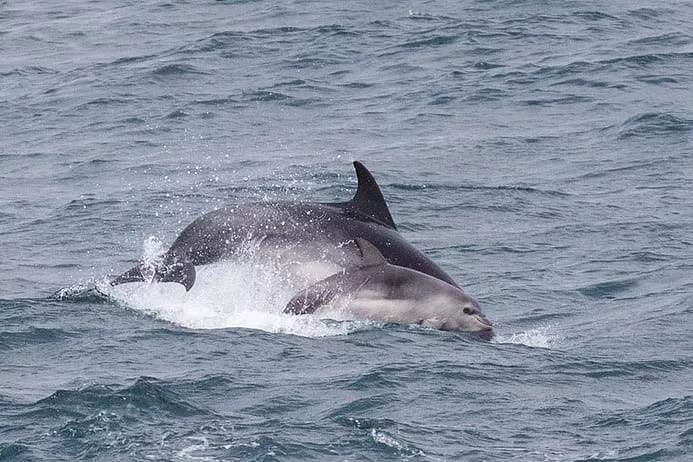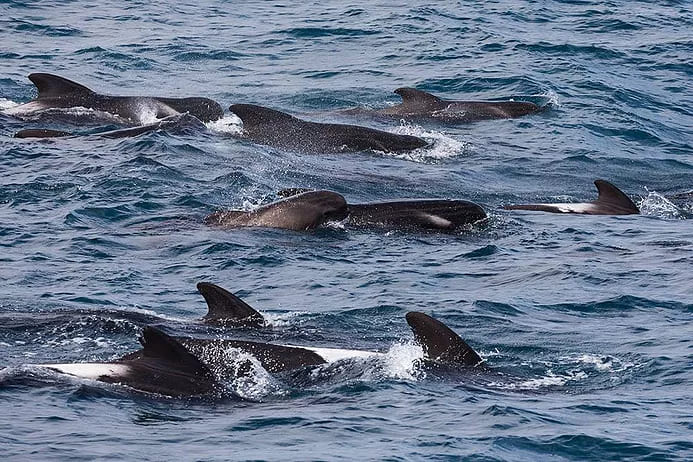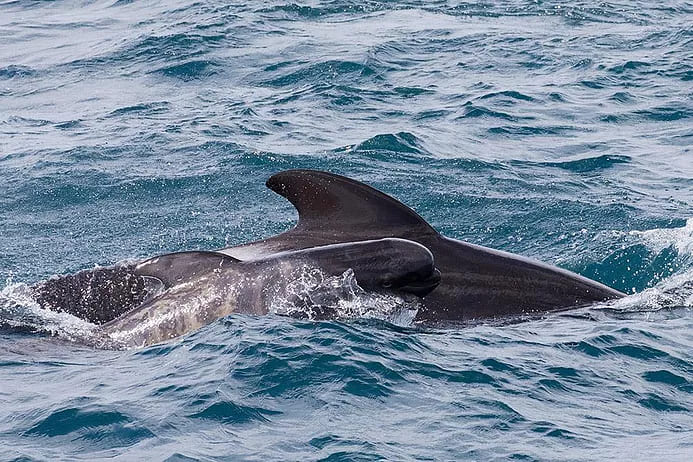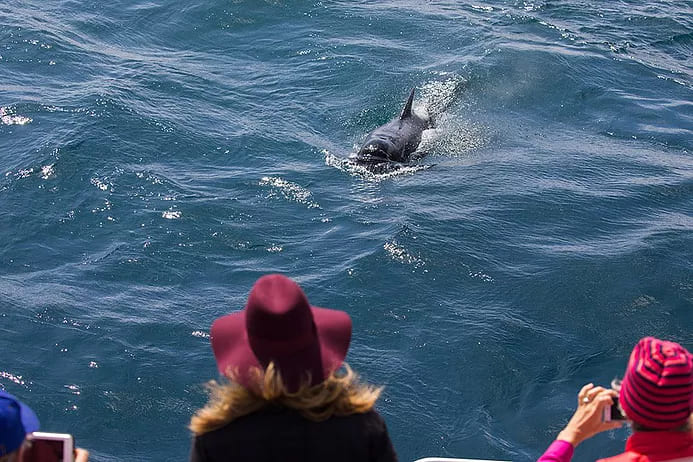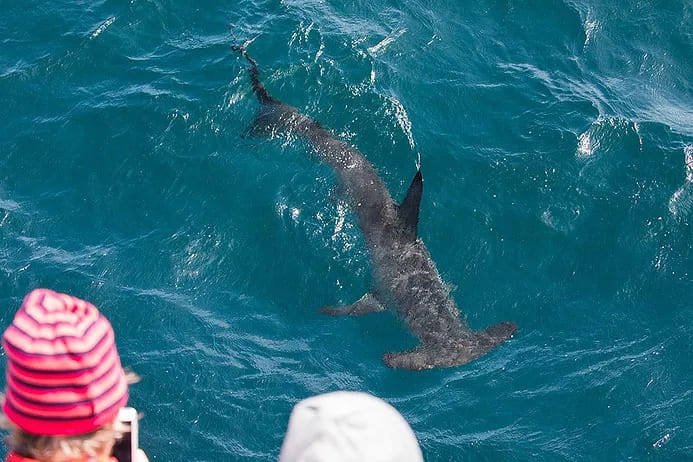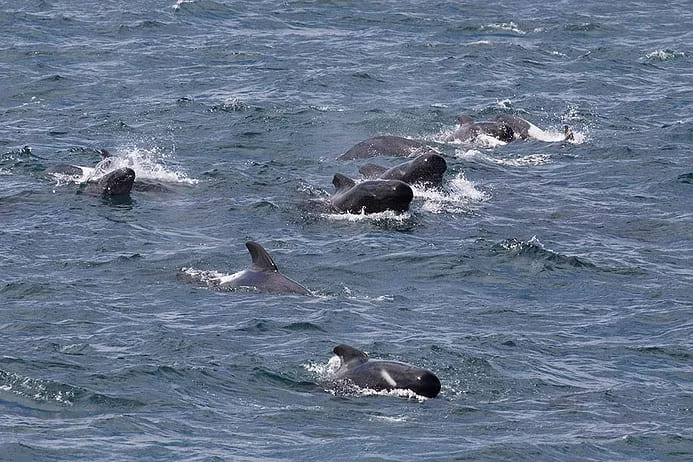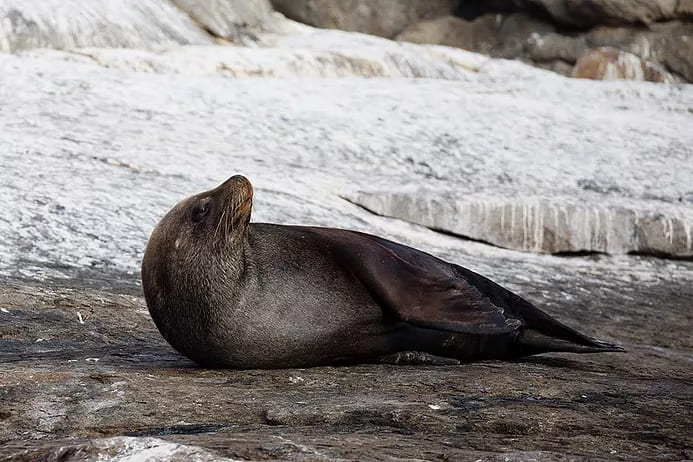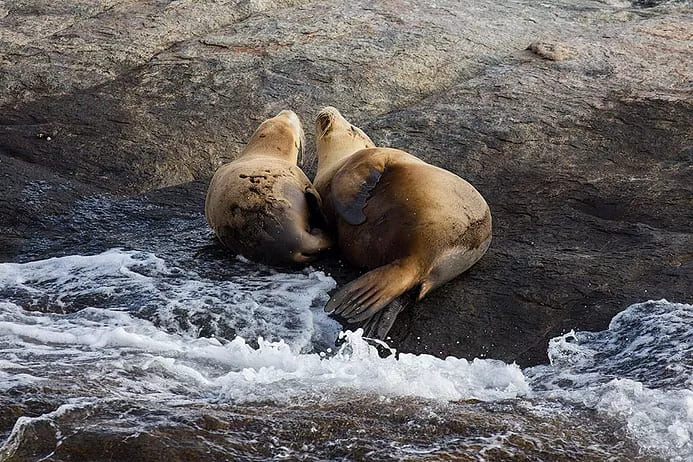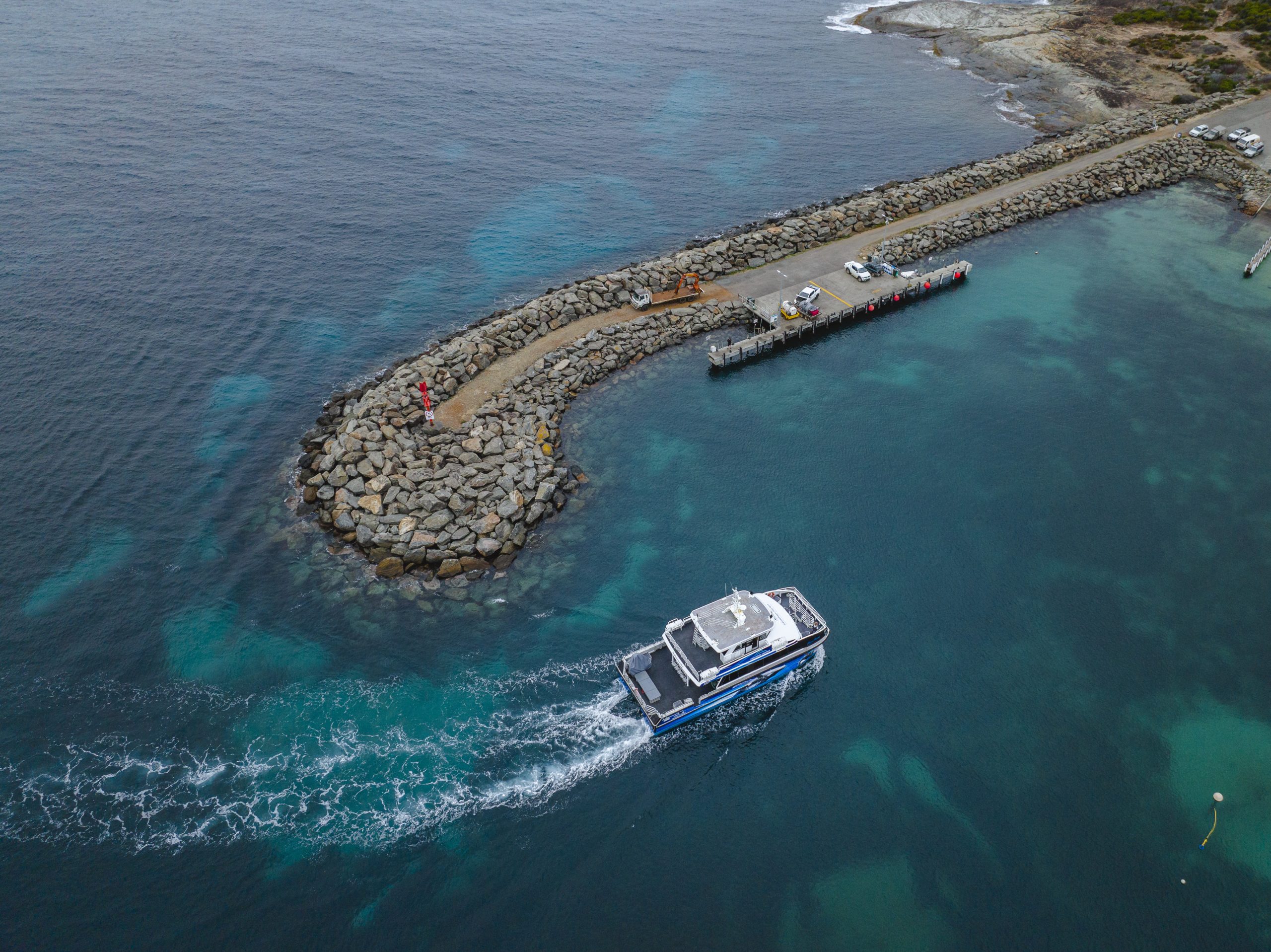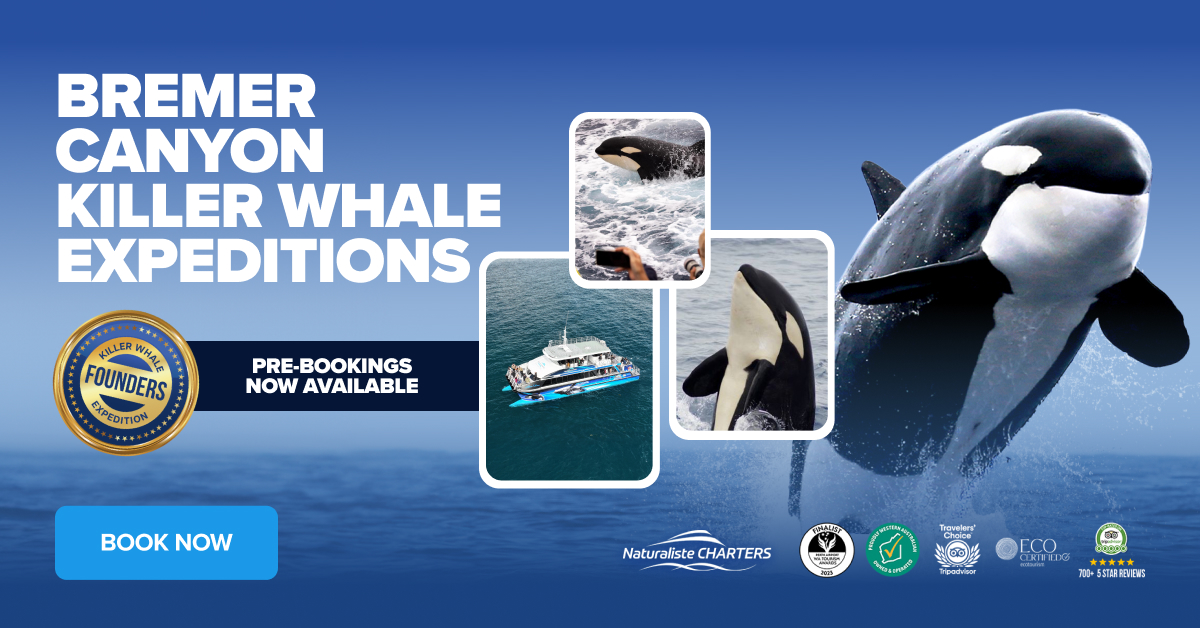Aviate, navigate, communicate, it was a day for pilots today! Heading out to the canyon riding the smooth swell with little wind we heard a radio call from the current research vessel Dhu Force that pilots were incoming to the west, so we bypassed the hotspot and flew straight there! On arrival we noticed this huge and spreading algal bloom (trichodesmium). The bloom spread as far as we could see along the 1000m contour line like a landing strip for the long fin pilots closing in (see in blog photos). The reddish algae is made up of floating clumps or strings of phytoplankton, which attracts numerous amounts of zooplankton including animals in their larval stages, essentially starting the food chain in the canyon!
Slicing through the surface algae we found the fleet pilots and in their 100’s. The total number of animals nearing on 200 in 4 separate groups surrounding the vessel. Decelerating our engines after getting an appropriate distance away, we watched as some groups angled in, heading towards either side of our bow with others running parallel to the boat. Much to the amusement of our exhibitioners on board we were surrounded. The pilots shallowed dived around the vessel manoeuvring themselves about and occasionally tail slapping while maintaining a respectable distance. Within the pod of pilots, we noticed the presence of a dolphin, possibly an oceanic bottlenose nudging in tightly and following them through the canyon.
After photographing this interesting interspecies entourage, we soon left the pod in search of Orca. Tracking westwards to our farthest point today almost 14 nautical miles from the hotspot we found another pod of pilot whales. The second group of pilots appeared to be travelling together in a loose pod formation with over 100 animals in total. They surged through the water picking up the pace and leading us on a short chase eastward before we were quickly distracted by the presence of a hammerhead shark. Confusing the fin at first for a sunfish we were delighted by the company of the shark who seemed to remain at the surface for at least 5 minutes allowing all our exhibitioners (especially those with polarized lenses) to get a good look. Hammerhead sharks have one of the widest fields of vision and better depth perception than most sharks because of their widely set eyes. Their eye positioning helps them with manoeuvrability allowing them to get an almost 360-degree view when hunting. After losing sight of the hammerhead we tracked back eastwards, passing through the hotspot one last time stopping at yet another mega pod of pilots!
Until tomorrow,
Naturaliste Charters

